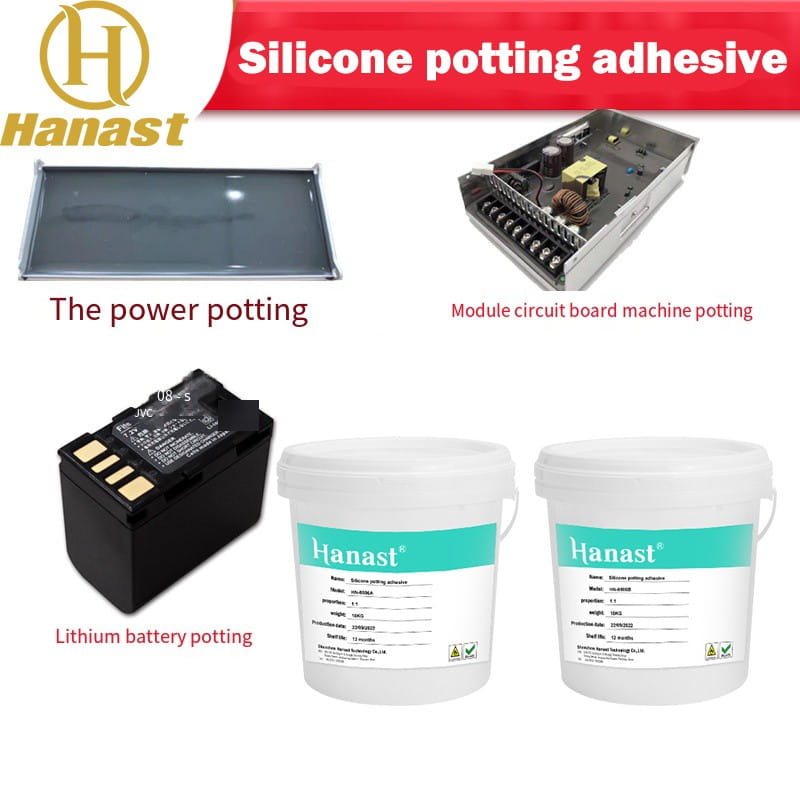How to clean the potting glue on the circuit board
 Dec 19,2022
Dec 19,2022

 Hanast
Hanast
The epoxy resin potting adhesive is very hard and difficult to remove. Acetone, alcohol and acetic acid can't really clean the epoxy resin potting adhesive. The epoxy resin potting adhesive can be cleaned with alcohol before it hardens. If it hardens, the alcohol can't be removed.
If the potting adhesive has not been cured, it can be heated with a hair dryer, and then scraped off with a scraper or other tools. The residual potting adhesive can be wiped off with a cotton cloth dipped in a small amount of acetone.
There is also a kind of silicone potting adhesive that is relatively soft after curing. If you want to remove the cured silicone potting adhesive, just use a blade to make a cut around it, and then take out the cured potting adhesive.
Encapsulation is to pour the liquid polyurethane composite into the devices containing electronic components and circuits by mechanical or manual means, and solidify it into thermosetting polymer insulation materials with excellent performance under normal temperature or heating conditions. The liquid polyurethane compound used in this process is the potting adhesive. There are two kinds of curing conditions: room temperature curing and heating curing. From the perspective of dosage form, it can be divided into two categories: two-component and single component.
Its role is:
1. Strengthen the integrity of electronic devices and improve the resistance to external shocks and vibrations.
2. Improve the insulation between internal components and lines, which is conducive to the miniaturization and lightweight of devices.
3. Avoid direct exposure of components and circuits, and improve the waterproof and moisture-proof performance of components.
matters needing attention:
1. The curing failed due to no mixing before use or no layering of pigments and fillers during storage.
2. The change of ambient temperature leads to the change of curing speed and fluidity of rubber compound.
3. Poor sealing after unsealing will cause moisture absorption and crystallization.
4. The amount of compound is too large or the service life is extended too long, resulting in "burst polymerization".
5. Light color cured products will change in color due to curing temperature, UV and other conditions.




 Home
Home
 How many types of RTV silicone rubber glue are there? What are the characteristics of RTV silicone glue?
How many types of RTV silicone rubber glue are there? What are the characteristics of RTV silicone glue?  You May Also Like
You May Also Like







 Tel
Tel
 Email
Email
 Address
Address












